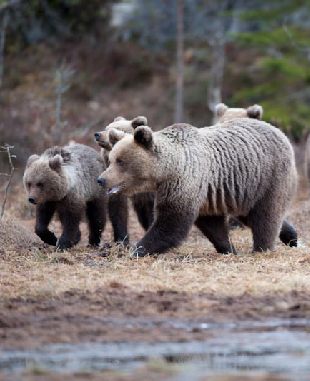




© 2014 Wild Brown Bear Centre






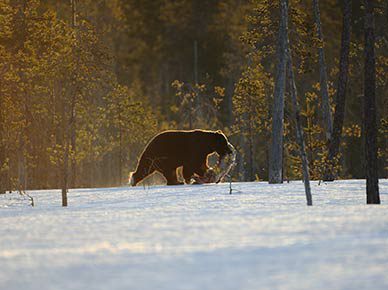
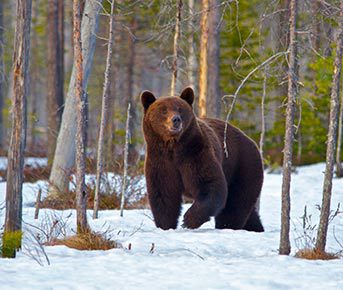
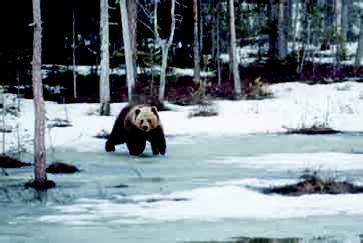
Due to the various lakes and ponds, and the quickly changing climate, during April bears can be seen on ice, snow and wetland.
Snowfall makes tracks appear more obvious. Your guide can demonstrate some of the variations between different animals, whilst providing further info about the species.
Due to the snow reflecting the available light, the bears are well lit with a soft light, which makes for well-exposed photographs, even of their undersides.
Sometimes the bears will experiment with the snow and ice as they emerge from hibernation; it is possible to make some very unique photographs at this time.
Snow showers are common during the spring at Wild brown Bear, they offer the potential for striking photographs. Due to the unpredictability of the weather at this time, it is impossible to promise these conditions; however, during April these showers are more common, making Beautiful ‘Environmental portraits’ possible.
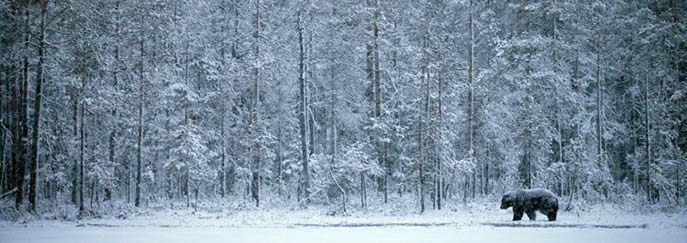
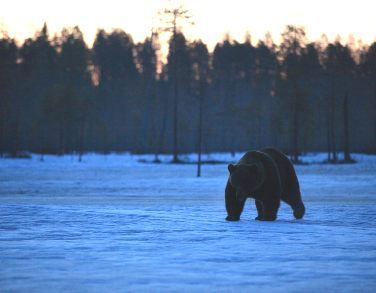
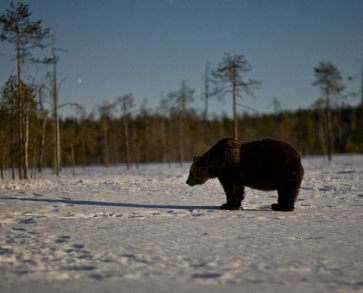
The presence of snow enhances the amount of available light, enabling photographs to be taken well into the night. During nights where the full moon is present it is even possible to take images in the early hours of the morning, of course this has been further enhanced by modern camera equipment. The photo above demonstrates this perfectly as it was captured at 3am, April 19th. (Above left)
Around the beginning of May, the snow begins to fully retract and melt away. It exposes the ground beneath after a winter in hiding. Due to the lack of light and nutrients over the winter, the grasses and shrubs are brown in colour, and the purity of the snow is exchanged for a new landscape.
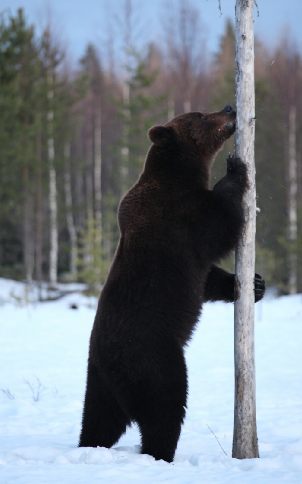
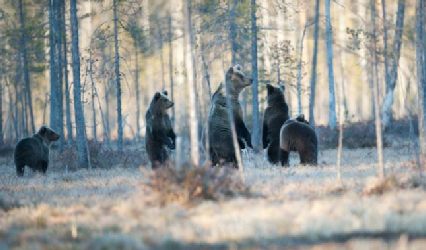
During May it is possible for mothers to bring their second year cubs into the area. Although they are much larger and more developed than new-borns, their mothers are still wary of large males and the danger that they pose. Usually the cubs are kept near trees which are the perfect escape route in the case of an emergency.


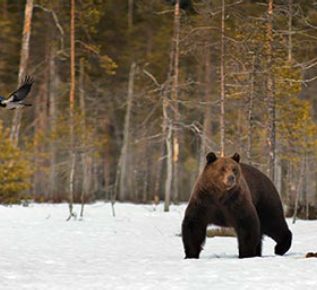




The open areas of grassland resemble a tundra type landscape, the ground is moist from the thawing of the snow, and the browns of the soil and grasses are only broken up by patches of green from the emerging foliage.
